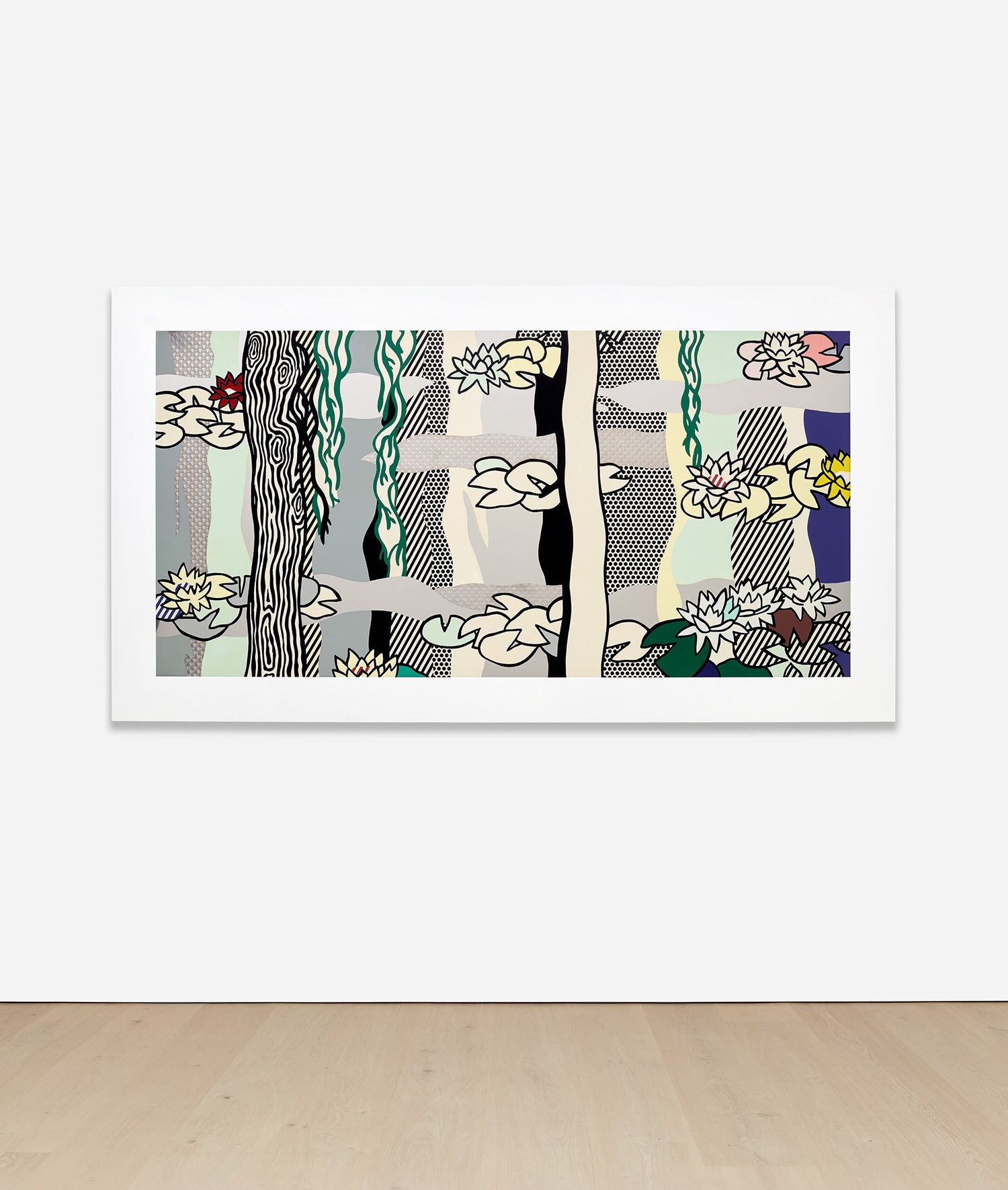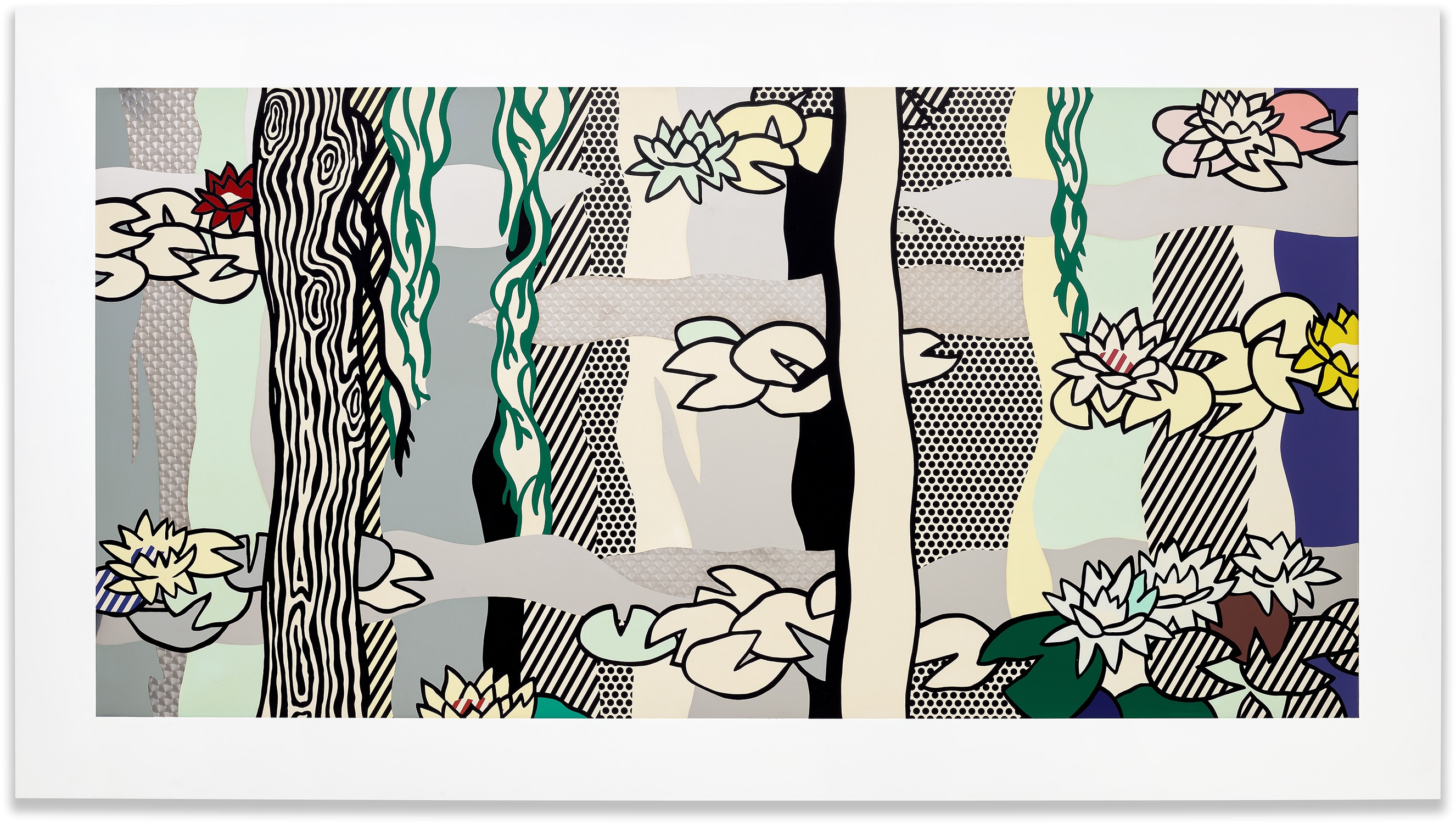



歐洲私人收藏
123Ο◆
Roy Lichtenstein
《睡蓮與柳樹–來自「睡蓮」 (C. 266)》
1992年作
絲印版畫瓷漆 加工渦旋不銹鋼(全紙本)
已裱:147.5 x 264.5 公分 (58 1/8 x 104 1/8 英吋)
款識:簽名、日期、O.K.(畫背)
尚有23版、7版藝術家試作版,由馬里蘭州Saff Tech Arts畫廊出版,此作為可以印刷版本,存於原裝藝術家指定白色木框。
尚有23版、7版藝術家試作版,由馬里蘭州Saff Tech Arts畫廊出版,此作為可以印刷版本,存於原裝藝術家指定白色木框。